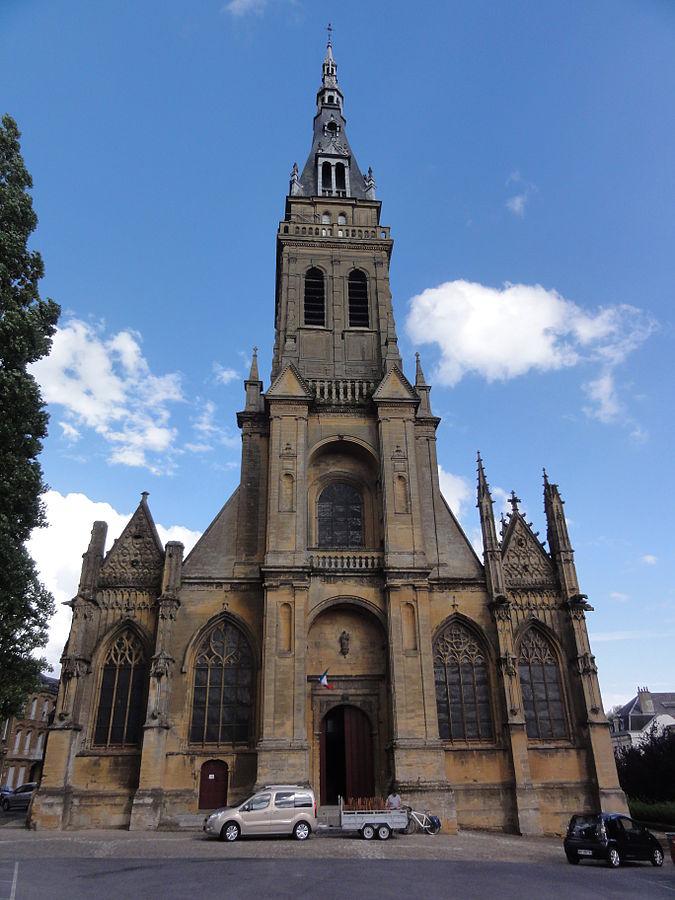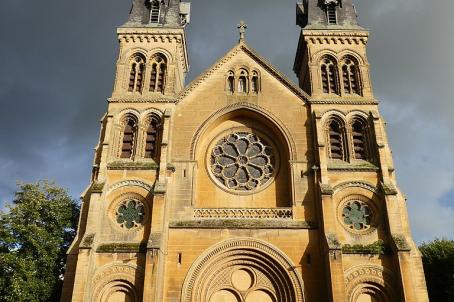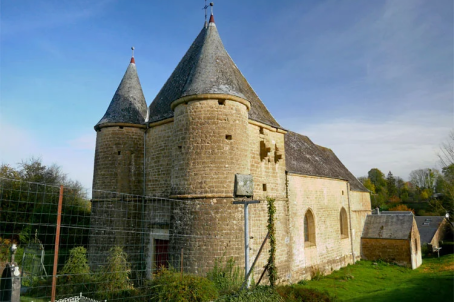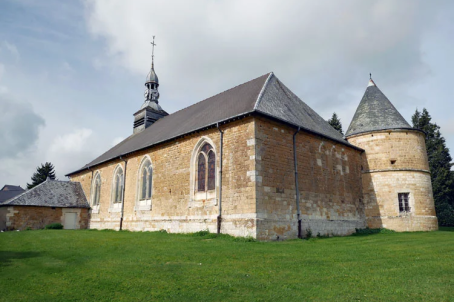Church of Notre-Dame d'Espérance

Begun in 1499, construction took 120 years, reusing the foundations and some elements of the original Romanesque church. It is a late late flamboyant Gothic style of a large unit, with five naves and no external buttresses. The narrowness of the central nave and the absence of capitals accentuates the impression of height (18 m). Observe the exceptional vaults with twenty-one cross keystones, with large, richly decorated pendentives. Great diversity of carved decorations in the tops of the Gothic windows. Renaissance style for the staircase of the tribune and the exterior of the large west portal. The neo-Gothic south portal (restored in 2009) and the spire were added in the 19th century. The sober and uncluttered interior was restored after the 1944 bombing.
About this building
The flamboyant style is sometimes clearly visible as evidenced by the monumental porch of the south portal, which was used as the main entrance for part of the 16th century. Above, the high façade of the transept is decorated in its entirety. A series of arches frame the bay, and the gable is covered with fine carved interlacing. These decorations are found in the pinnacles, gargoyles and small canopies placed on the buttresses to shelter the statues. A surprising set of modern stained-glass windows made between 1954 and 1979 on the cartoons of the painter René Dürrbach.





